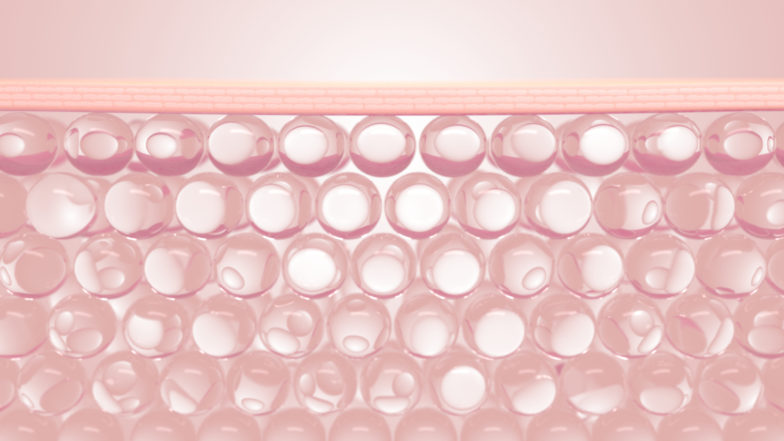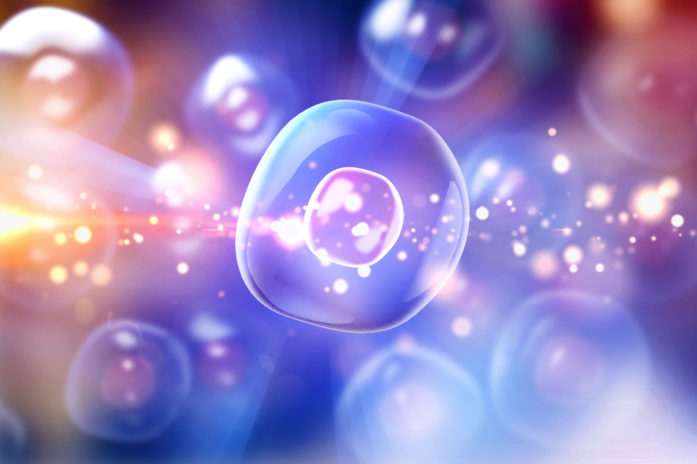Proteins Made by Design, Part 1 (of 3)
New Discoveries about Ribosomes Add to the Case for Intelligent Design
Several years ago I worked in research and development for a Fortune 500 company. As part of my job, I occasionally visited our manufacturing operations. I always found these visits to the plants fascinating. It was hypnotizing to watch machinery carefully perform high-precision tasks, transforming starting materials and components into finished product. Each stage in the process often took years of research, careful planning, design, and construction to effectively implement.
Production operations also take place in the cell and they evoke just as much amazement as the assembly lines built by human engineers. The analogy between the cell’s manufacturing systems and those created by humans suggests that life’s chemistry stems from the work of an Intelligent Agent.
One particularly impressive example of cellular manufacturing is the assembly line that produces proteins. These large, complex molecules are formed when the cell’s machinery joins amino acids together in a head-to-tail fashion to form a chain-like molecule. To a first approximation, the cell uses 20 different amino acids to build protein chains. The specific sequence of amino acids in the protein chains determines the structure and function of the protein. Once assembled, the amino acid chains fold into complex three-dimensional shapes, which dictate protein function.
The Machines
Ribosomes are subcellular particles (organelles) about 23 nanometers in diameter. They play a central role in protein synthesis by catalyzing (assisting) the chemical reactions that form the bonds that join amino acids together. A human cell may contain up to half a million ribosomes. A typical bacterium possesses about 20,000 of these subcellular structures, comprising one-fourth the total bacterial mass. In human cells, these organelles are distributed throughout the cell—in the cytoplasm, attached to the cytoskeleton, and embedded in the membranes of the endoplasmic reticulum.
A ribosome consists of proteins and RNA molecules called ribosomal RNA (rRNA). Two subunits of different sizes combine to form a functional ribosome. In organisms like bacteria, the large subunit (LSU) contains two rRNA molecules and about 30 different protein molecules. The small subunit (SSU) consists of a single rRNA molecule and about 20 proteins. In more complex organisms, the LSU is formed by three rRNA molecules that combine with around 50 distinct proteins and the SSU consists of a single rRNA molecule and over 30 different proteins. The rRNAs act as scaffolding that organizes the myriad ribosomal proteins. They also catalyzes the chain-forming reactions between amino acids.
Protein Manufacture
The ribosome works cooperatively with two other types of molecules, messenger RNA (mRNA) and transfer RNA (tRNA), to produce proteins. mRNA molecules contain the instructions needed to assemble the protein. tRNA molecules serve as couriers, ferrying amino acids to the ribosome per the directions housed in mRNA.
At the time protein synthesis begins, the ribosome complex assembles around mRNA, which is a chain-like molecule. The rRNAs bind to mRNA and properly position it in the ribosome. The tRNA carrying the amino acid corresponding to the first amino acid position in the protein chain binds to a location in the ribosome called the P site. The tRNA-amino acid complex corresponding to the second amino acid in the protein chain binds to an adjacent site called the A site.
Once the tRNA molecules with their amino acids are positioned in the A and P sites, a region of rRNA in the LSU referred to as peptidyl transferase forms a chemical bond between the first and second amino acids in the protein chain. When this occurs, the amino acid in the P site dissociates from its tRNA, moves to a third location, the E site, and then leaves the ribosome, becoming available to bind another amino acid. The tRNA in the A site, which has the growing protein chain attached to it, translocates to the P site. The tRNA-amino acid complex for the third position in the polypeptide chain enters the A site and bond formation ensues. And so, tRNA dissociation and transfer from A to P to E sites repeats. The entire process occurs over and over again until all the information in the mRNA is read and the entire protein is synthesized. For each step in this assembly line process, the ribosome complex advances (like a ratchet) along the mRNA length.
Recent work by scientists from Germany provides new insight into the manufacture of proteins. They were able to follow structural changes in the A, P, and E sites through the translocation process as the large and small subunits of the ribosome repeatedly ratchet back and forth. This research highlights the machine-like quality of the ribosome and adds to the case for intelligent design that I advanced in The Cell’s Design.
Biochemical Intelligent Design
Manufacturing machines and systems don’t just happen. Instead they require thoughtful planning and design. This common understanding undergirds one of history’s best known arguments for God’s existence: the (Watchmaker argument](https://en.wikipedia.org/wiki/Watchmaker_argument) posited by 18th century Anglican natural theologian William Paley (1743-1805). Using a watch as an analogy, Paley logically demonstrated that life’s biochemical machinery stems from the Creator’s handiwork.
For Paley, the characteristics of a watch—the complex interaction of its precision parts for the purpose of telling time—implied the work of an intelligent designer. He asserted that just as a watch requires a watchmaker, so too, life requires a Creator, since organisms display a wide range of features characterized by the precise interplay of complex parts for specific purposes.
The way ribosomes produce proteins would cause any engineer (and biochemist) to marvel at their elegant exactness. Adding to this awe is the mounting recognition that ribosomes function as literal machines, manufacturing proteins in an assembly line fashion. The machine-like properties of ribosomes imply that this operation (and hence life’s chemistry) stems from the work of a mind just as a watch depends on a watchmaker to explain its existence.
Next week I will describe another new ribosome discovery that further advances the case for biochemical intelligent design.
| Part 1 | Part 2 | Part 3 |





